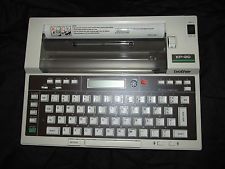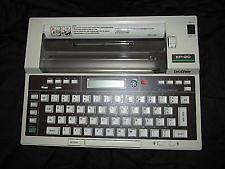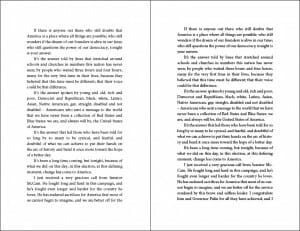The Trouble With Word Processors
I’ve been seeing a lot of the books self-publishers are producing on their own. Most of these books are “typeset” with Microsoft Word or another word processing program.
The problem is that these programs are the direct descendents of typewriters, not typesetting systems. They were originally meant to mimic the “look and feel” of the familiar typewriter. This was partly intended to calm the anxieties of the millions of secretaries and assistants who were being asked to switch to computers.
In fact, the original word processors typed with mono-spaced fonts—where each letter or number or punctuation takes up exactly the same amount of space—just like on a typewriter.
In contrast, today’s typesetting programs are descendants of early professional-level computerized typesetting systems that had taken over from film-based typesetting machines. Typesetting was an expensive business, and the people who bought type for books and magazines were skilled professionals who expected a quality product.
No, It’s Not The Same
I thought it would be interesting to look at a direct, head-to-head comparison. Here’s what I did.
- Located some text and placed it in a Microsoft Word document.
- Formatted the document to the size of a typical softcover book, 5-1/2″ x 8-1/2″ and set the margins all around at 1″.
- Set the text to Minion Pro, 11 point with exactly 15 points between lines.
- Turned on hyphenation, set the first line in each paragraph to indent 1/4″ and set the paragraph to justified copy.
I saved the resulting page as a PDF file so I could export it to a JPEG.
Let’s Try InDesign
Next I revved up Adobe InDesign. This program is the inheritor of decades of typesetting expertise and programming. It has remarkable flexibility and amazing precision in its controls. It’s not cheap, but it’s designed as a tool for professionals, and in that context it’s actually a bargain. Here’s what I did.
- Grabbed a template for a 5-1/5″ x 8-1/2″ book
- Set up a text frame and imported the file
- Arranged my page and type specs to match the Word file
- Exported the page as a JPEG.
I think it’s really interesting to compare these two pages. Here they are:
Almost every line of the Word version shows why it’s not a typesetting program. For a clear example, look at the third paragraph down. Gangly lines of words with large spaces, barely holding together. Compare it to the density and even “color” of the InDesign page. It’s a startling difference, at least to me.
Keep in mind that these pages are the result of raw text “dumps.” Although Word has almost no spacing, kerning or tracking controls, InDesign has many. I could start to manipulate this InDesign page to get exactly the look and feel I’m looking for. Incremental, almost infinitesimal changes will alter the overall tone of the page, and make it a more or less enjoyable reading experience.
And also keep in mind that the adjustments a designer might make for this layout in this case, with this specific typeface, are not necessarily the same ones she would make with another layout or even just another typeface, even of the same size and spacing.
So not only is the raw output of the InDesign typesetting algorithms far superior to anything Word can generate, in the hands of a competent designer, it will be that much better. Not only that, but I’ve used a premium font, one built for typesetting, for these samples. Most DIY self-publishers are using the fonts that came with their system.
Does This Story Have a Moral?
The explosion of interest in self-publishing has lead to an unprecedented number of books being produced on word processors. If you want your book to look the best it can, if you want a book that looks like a book and not like the report you did for English Composition, it’s good to know the difference. Sure, you can “typeset” your book on a typewriter, but then again, why would you want to?
I look forward to your comments.
Takeaway: Word processors are descended from typewriters. If it’s typesetting you are looking for, they are not the right tool.
Comments
There are 0 comments on this post














